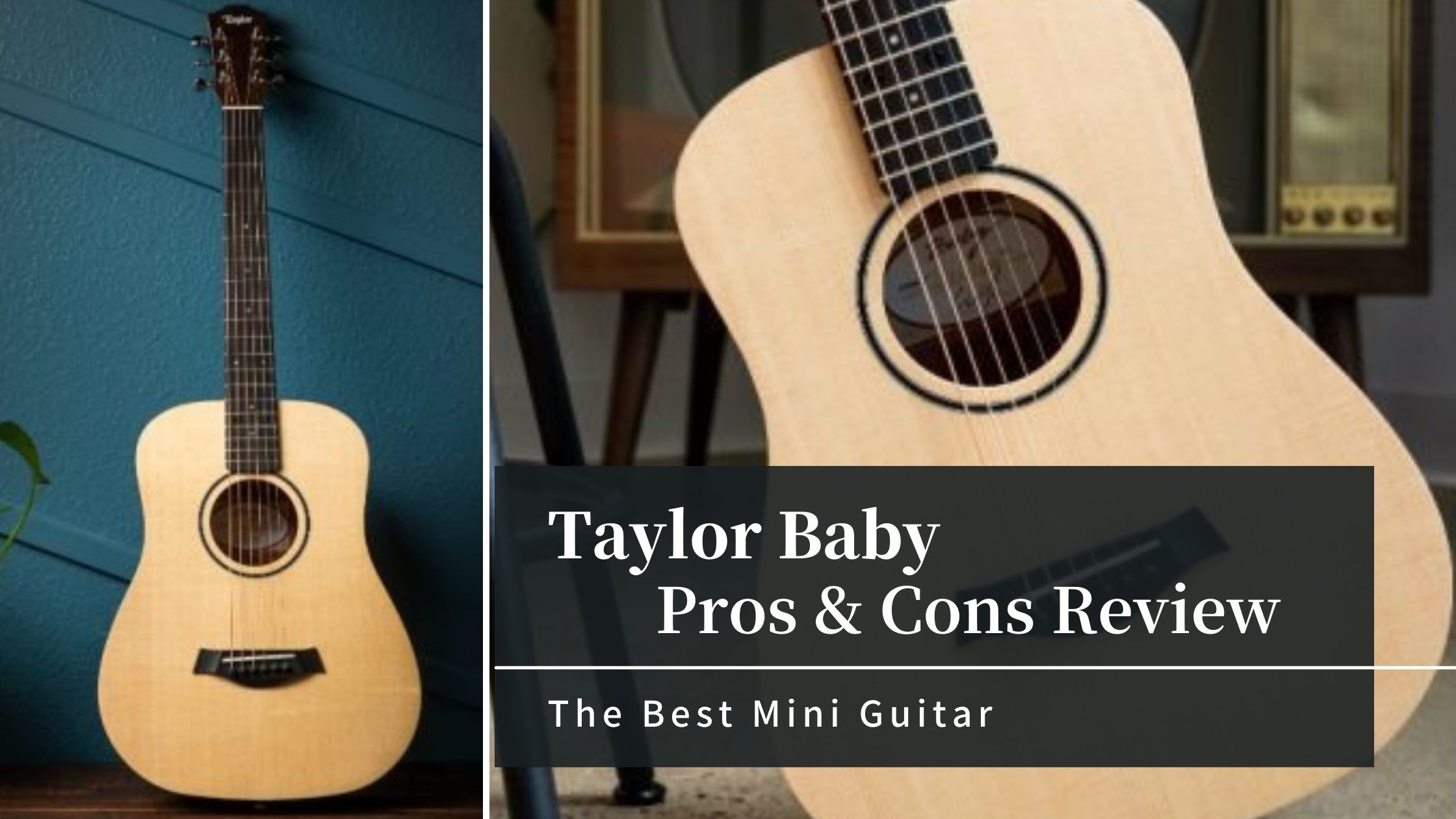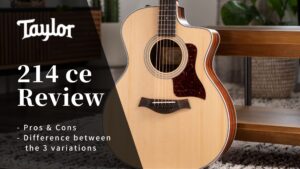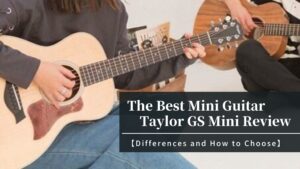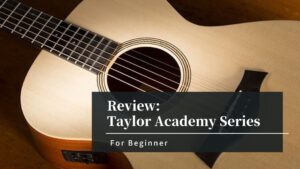The Taylor Baby is the most outstanding mini-guitar. Thanks to its mini-size-specific design, it achieves a well-balanced tone from the low to high frequencies. Admittedly, the bass isn't very rich. However, it can articulate well. With its sturdy layered body and accompanying gig bag, it's also convenient for transportation. The Little Martin, being made of HPL, is robust. However, its resonance lacks depth, and it has fewer harmonics.
If you’re looking for:
● a convenient sub-guitar
● Ordinary mini guitars can sound off-tune and are not enjoyable to play
● For children, you’d want to give the best guitar possible
Introducing the 3/4 size mini guitar, Baby Taylor. In this size, it offers high quality in sound, pitch, and playability.
Baby Taylor Specs/Size
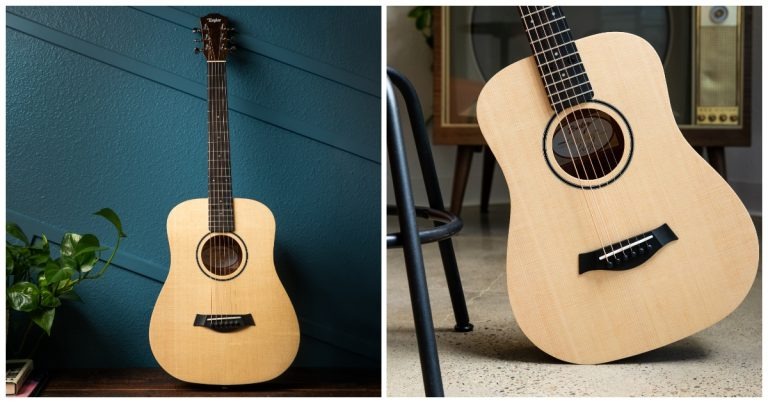
- Neck: Hard Rock Maple
- Fretboard: Ebony
- Nut/Saddle: TUSQ
- Scale: 22 3/4″ (578mm)
- Neck Width: 1 11/16″ (42.8mm)
- Body Length: 15 3/4″ (400mm)
- Body Width: 12 1/2″ (317.5mm)
- Body Thickness: 3 3/8″ (85.7mm)
Pros of Baby Taylor
Surprising Sound Due to Mini-Size Specific Design
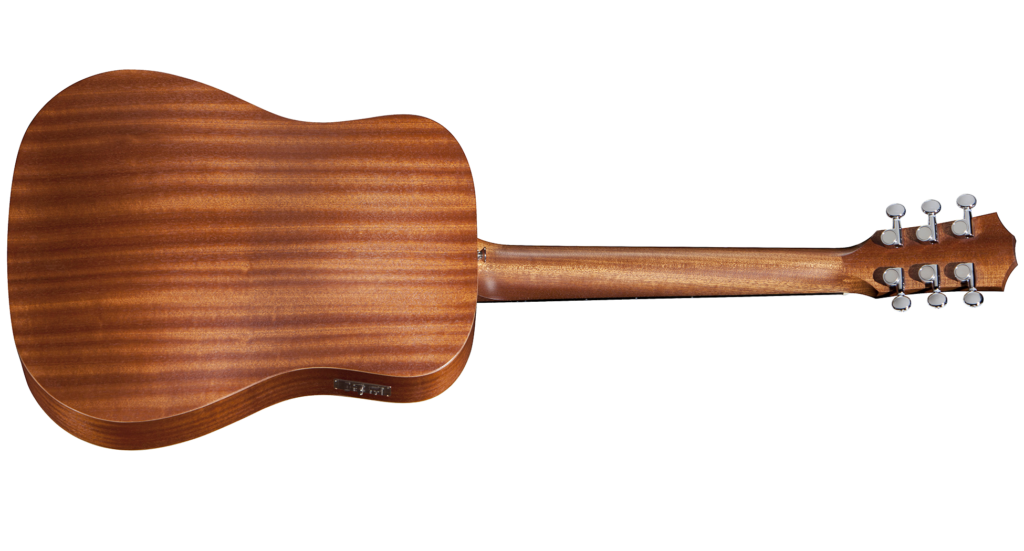
Although it’s a mini-guitar, simply reducing the size doesn’t make it a good instrument. Baby Taylor adopts several structures designed specifically for its size, achieving a sound that distinguishes it from other mini-guitars.
Typically, as the body size decreases, the resonance of the body also diminishes. Baby Taylor has adopted a rounded back structure, meticulously designed to gather the resonance inside the body towards the sound hole. This results in a balanced sound from high to low strings, and a responsive sound quality that is unparalleled in the mini-guitar world.
Playability Due to Taylor’s In-House Quality Control
Taylor has its own factories in the US and Mexico, and Baby Taylor is produced in the Mexican factory. Despite the differences in craftsmanship and technology, the Mexican-made guitars are of sufficient quality. They are adjusted for optimal saddle height and nut grooves, making the strings easy to press.
Generally, as the size decreases, the scale becomes shorter, and the pitch becomes less stable. However, Baby Taylor has a meticulous construction, achieving an unexpected pitch accuracy for a mini-guitar.
Plywood Body and Dedicated Gig Bag for Easy Handling in Any Environment
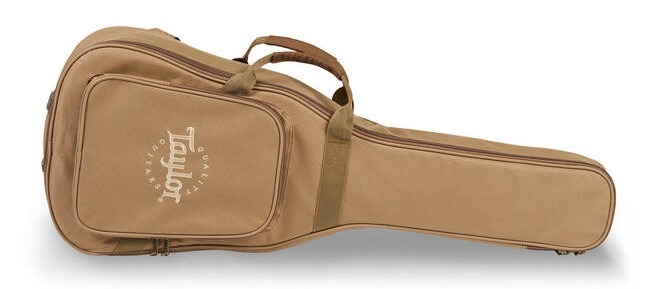
The convenience of a mini-guitar is its size. Compared to the full-size Taylor 214ce, Baby Taylor is significantly more compact. It also comes with a cushioned gig bag with the Taylor logo, making it ideal for those who already have a full-size guitar and are looking for a sub-guitar to carry around easily.
The layered side-back body provides durability against changes in humidity and temperature. While one might hesitate to play an expensive guitar outdoors, with the Baby Taylor, you can take it anywhere.
Cons of Baby Taylor

Relatively Expensive for a Mini-Guitar
Mini-guitars, designed for children or as a secondary guitar for adults, often come in the $100 range. The market price for the Baby Taylor is just under $500. While there’s a significant price difference, it clearly reflects the difference in quality.
This is crucial for children who are starting to develop a sense of pitch. With cheaper mini-guitars, there can be discomfort in the tuning, making it unpleasant to play. However, many find that this isn’t an issue with the Baby Taylor.
Caution Regarding String Thickness at Shipment
When the total length of the strings is short, the amplitude of the strings becomes larger, making the pitch more likely to be disturbed. This is an unavoidable structural issue. To stabilize the pitch, thicker strings are used when the guitar is new compared to standard-sized guitars.
- Regular-sized guitar strings: Light gauge
- Baby Taylor guitar strings: Medium gauge
Thicker strings help to reduce excessive amplitude, ensuring a stable pitch. This also results in a tighter, clearer sound.
However, as the strings become thicker, they also become tenser. As a result, the force required to press down on the strings is not much different from that of a standard-sized guitar. If you prefer strings that are softer and easier to press, it might be a good idea to switch to lighter gauges, such as a light gauge string.
Visible Screws
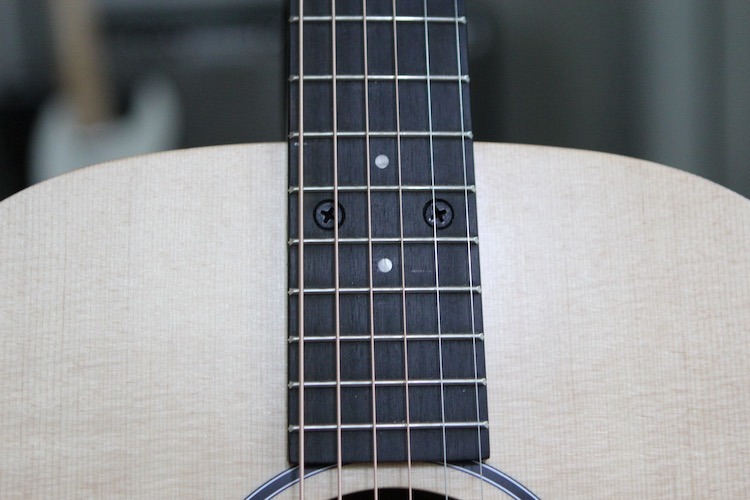
Due to its unique design, the guitar has a look where bolts are visible from the fretboard side, which is quite unusual for an acoustic guitar. Some people who value an authentic appearance might find this off-putting. Personally, I don’t mind it much since the quality of the instrument is high.
Variation
There are variations based on the difference in wood, which affects the look and sound, and the presence or absence of pickups.
That said, all models share:
- The balanced clarity characteristic of Taylor guitars
- While they have the typical lack of low frequencies found in mini-guitars, they possess the unique body resonance of the Baby Taylor.
| Feature/Model | BT1 Walnut | BT2 Mahogany | Koa | Taylor Swift |
|---|---|---|---|---|
| Top Material | Spruce | Mahogany | Koa | Spruce |
| Side/Back Material | Walnut | Sapele | Koa | Sapele |
| Market Price (No PU) | $399 | $449 | N/A | $449 |
| Market Price (With PU) | $499 | $549 | $699 | $549 |
The guitar features a maple neck and ebony fretboard. Other parts and sizes remain the same, with the differences being in the top material and the side-back material.
Baby Taylor Walnut (Spruce Top + Walnut Side/Back)
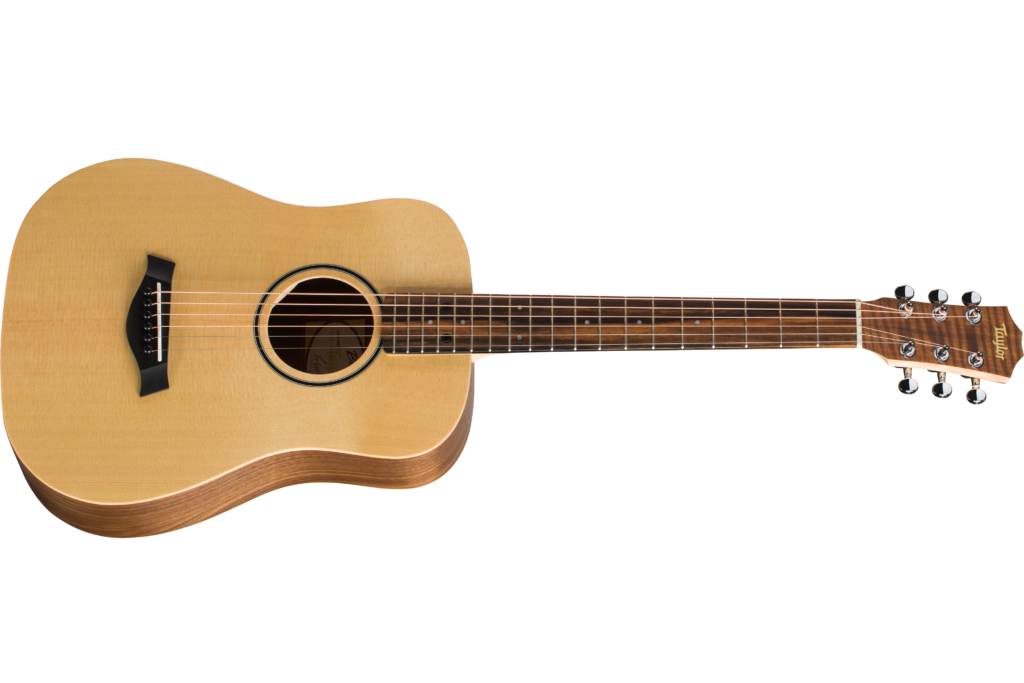
Features the same wood composition as the full-sized 100 series. Combined with the mini-sized body, it produces a clear and crisp sound. It’s great for strumming.
Baby Taylor Mahogany (Mahogany Top + Sapele Side/Back)
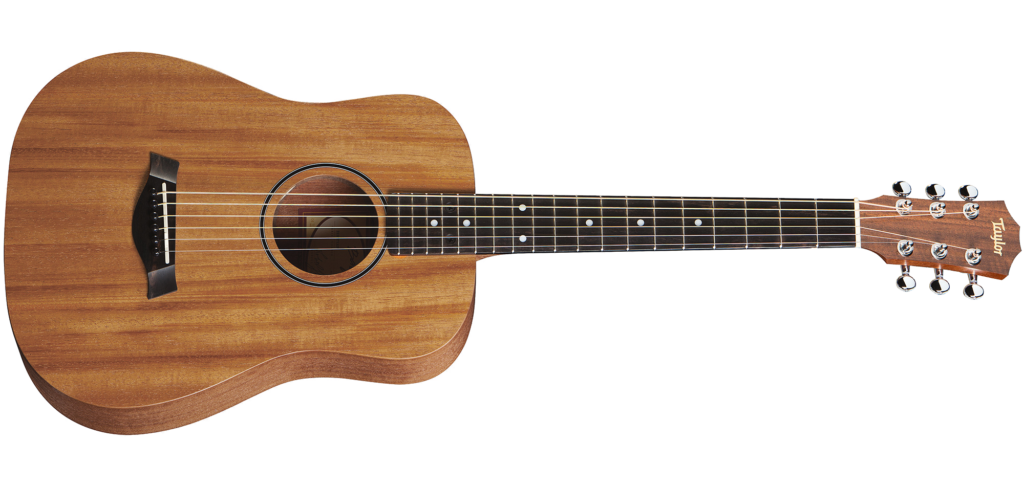
The mahogany top is heavier than spruce, leading to a warmer sound tendency. Contrary to its appearance, it gives an impression of a more versatile acoustic guitar sound compared to the standard Baby Taylor.
Baby Taylor Koa (All Koa)
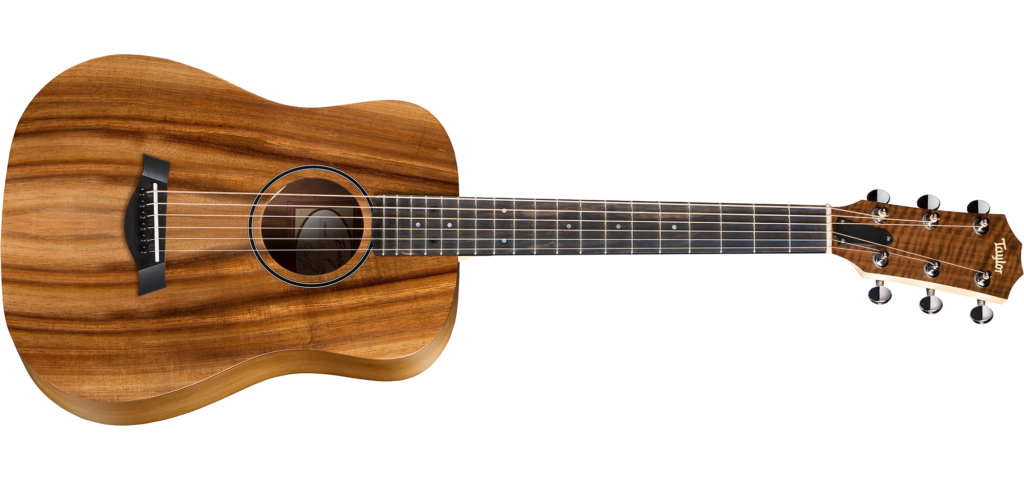
Made of koa wood, this is the only model in the Baby Taylor line that’s priced higher. There’s no model of the Koa that comes without a pickup.
The grain of the top wood varies greatly between individual guitars, so you’d want to choose carefully based on looks. It has a quick response and warmth in each note, making it ideal for both strumming and fingerstyle playing.
Taylor Swift Baby Taylor (Spruce Top + Sapele Side/Back)
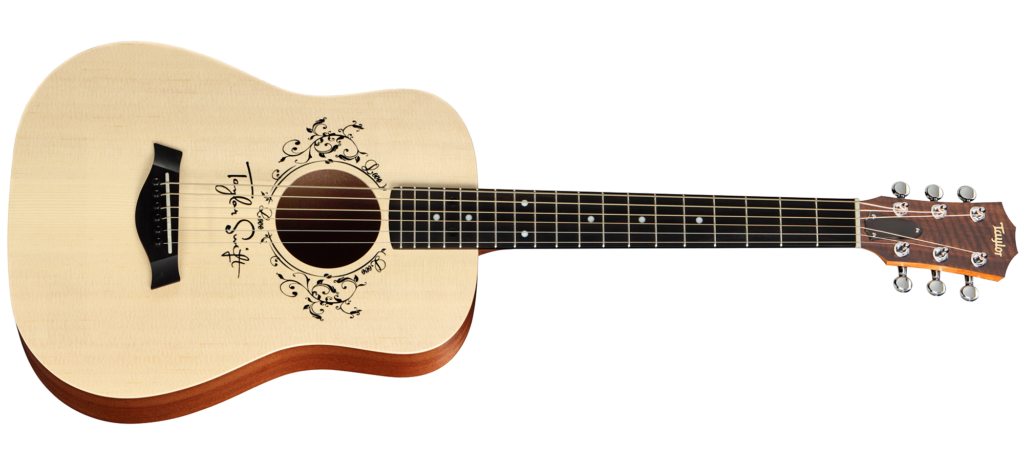
This is Taylor Swift’s signature model, adorned with a rosette and signature on the top wood. It’s said she used it for composing during her early tours. It has a sound character similar to the standard Baby Taylor but with a slightly softer sound.
Presence or Absence of a Pickup
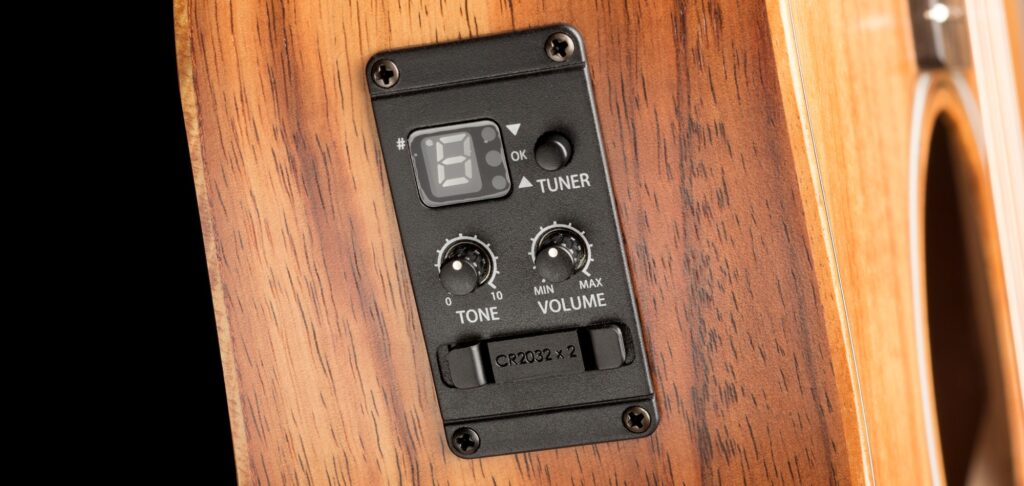
Models with the “-e” notation in their name indicate that they are equipped with a pickup. Pickup models come with the ES-B installed. Listening solely to the sound of the pickup, one might not even realize it’s a mini-guitar. The clear sound characteristic of Taylor is still present even in their acoustic-electric models.
It stands apart from the typical hard piezo pickup sound often found in guitars priced under $1,000. It’s also convenient as a recording sub-guitar. The control section includes volume and tone, and also has a built-in tuner.
Even when not connected to an amp, it’s convenient to carry outdoors, reducing the amount of gear you need to bring. Plus, there’s no worry about losing a separate tuner.
Comparison with Little Martin
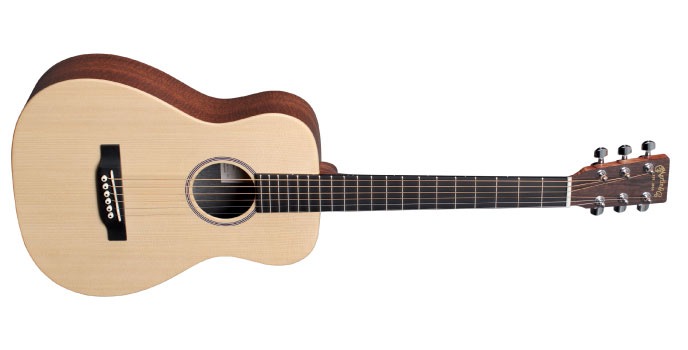
There are many mini-guitars in the $100 range, including those from other lesser-known brands. However, issues like poor pitch make many of these instruments feel third-rate in terms of craftsmanship.
When considering mini-guitars that offer a stress-free playing experience for intermediate and advanced players, the top contenders are Baby Taylor and Little Martin.
Let’s compare the two models.
| Specification | Baby Taylor | Martin LX1 |
|---|---|---|
| Top Material | Solid Sitka Spruce | Sitka Spruce Plywood |
| Side/Back Material | Walnut Plywood | HPL (High-Pressure Laminate) |
| Neck | Hard Rock Maple | Birch Laminate |
| Fretboard | Ebony | Richlite |
| Scale | 22 3/4″(578mm) | 23″ (584mm) |
| Nut Width | 1 11/16″(42.8mm) | 1 11/16″(42.8mm) |
| Case | Gig Bag | Gig Bag |
| Pickup | Taylor ES-B | Fishman Sonitone |
| Market Price (No PU) | $399 | $399 |
| Market Price (With PU) | $499 | $499 |
Size
There isn’t much difference in size, including the scale. The nut width is the same for both. In terms of playability, both are without any issues.
Sound Differences
The biggest difference stems from the materials and construction, which affects the sound. HPL (High-Pressure Laminate) is a board made by compressing waste materials, contributing to environmental conservation and cost reduction. While this compressed material has the advantage of being strong, it also has a distinct acoustic characteristic when used in guitars. Compared to pure wood, it lacks depth in resonance and has significantly fewer harmonics. In terms of a familiar acoustic guitar sound, Baby Taylor takes the lead.
Brand Differences
In terms of history and recognition, the name “Martin” is monumental. Furthermore, Little Martin was once used by Ed Sheeran, and he even had a signature model. *Currently, he uses “Sheeran by Lowden,” developed in collaboration with Lowden. On the other hand, in recent years, Taylor has grown to be the brand with the highest number of acoustic guitar sales in the US. Their signature model features Taylor Swift. However, it seems she no longer uses it. Both brands being used by Grammy-winning artists speaks volumes about their reliability. Of course, when it comes to this aspect, including the looks, it’s a matter of personal preference.
Conclusion: Baby Taylor is More Recommended
If you love the Martin brand or prioritize durability, then Little Martin might be for you. However, I strongly recommend Baby Taylor. When you play and compare them, the true essence of an acoustic guitar is more evident in the Taylor. Even if you’re just using it outdoors occasionally, its durability is more than sufficient.
Baby Taylor Review Summary
Despite its price being significantly less than $500, the Baby Taylor is a mini-guitar that can be used without any complaints by intermediate and advanced players. It’s the most recommended mini-guitar as a second guitar.
For those who prefer a mini-guitar smaller than full size but prioritize sound quality, Taylor’s GS Mini is recommended.
There are cases where people who gave up on the guitar due to the difficulty of stretching their fingers to press chords find it easier with a mini-guitar.
For those who are hesitant about starting the guitar because of pressing concerns, consider Taylor’s Academy series as well.
Choose based on which size suits you best.

